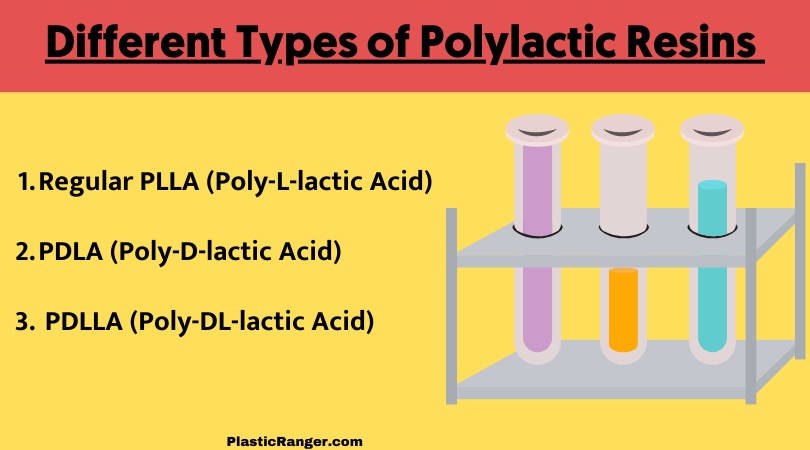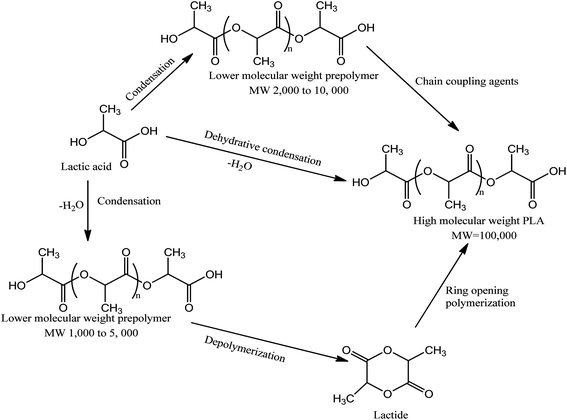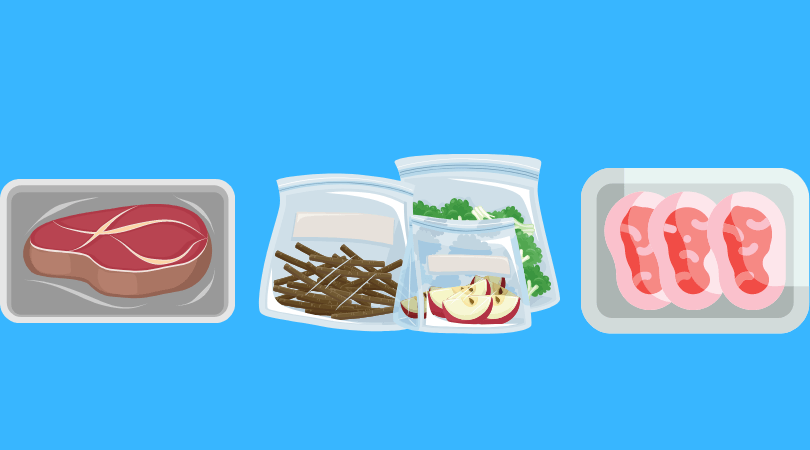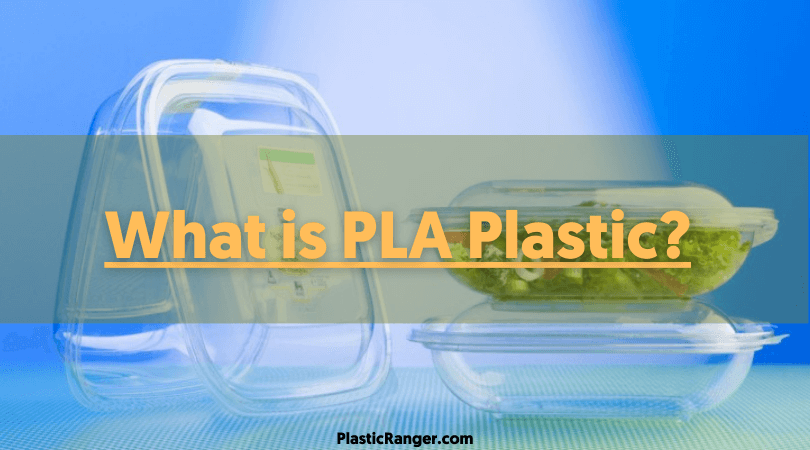Hello everyone. Today I will talk about a very engaging topic of PLA material, aka polylactide, an eco-friendly alternative to petroleum-based plastics. So without further ado, let’s begin.
What is PLA Plastic?
Polylactide, or PLA, is one of the most popular plastics derived from lactic monomers extracted from natural sources like sugarcane or corn. It is a versatile biodegradable plastic with good applicability to several products used for packaging, automobiles, textiles, and healthcare.
Polylactide is the second most widely used bioplastic (the most used bioplastic is thermoplastic starch) worldwide.
The PLA characteristic is similar to Polypropylene(PP) and Polyethylene(PE). It is relatively inexpensive to produce as it can be done in the existing manufacturing machine, initially designed for traditional thermoplastics derived from petroleum.
These are the largest producers of PLA plastic worldwide:
- RPT company
- Evonik
- NatureWorks
- Total Corbion PLA
- FKuR
The wide range of applications with PLA material makes it a go-to bioplastic for manufacturers looking for strength and appearance in a thermoplastic. The most common applications are found in medical devices and food packaging.
Different Types of Polylactic Resins

Multiple variations of PLA resins are available in the market, mainly due to their high demand for several applications. The main variations are – Regular PLLA (Poly-L-lactic Acid), PDLA (Poly-D-lactic Acid), and PDLLA (Poly-DL-lactic Acid).
They have slight changes in their fundamental properties; however, they are derived from a single source – Lactic acid: C3H6O3.
How is PLA Made?

Before understanding how PLA is made, let’s first understand its basic ingredient – lactic acid.
Lactic acid(hydroxypropionic acid) is the most widely materializing hydroxycarboxylic optical active acid. The molecule is present with two enantiomers – L- and D-lactic Acid.
PLA material is formed from the lactic monomers extracted by sugarcane, beet, sugar fermentation, etc.
PLA contains stereoisomers such as:
- Poly(L-lactide) (PLLA)
- poly(D-lactide) (PDLA),
- and Poly(DL-lactide) (PDLLA)
Polylactide is produced using three methods. Here are they:

Source - Royal Society of Medicine
Ring-Opening Polymerization
Once PLA plastic is produced by using lactide monomer and then formed lactide is followed up by ROP using metal alkoxides as a catalyst, the creation of a high molecular weight polyester – PLA.
Direct polycondensation reaction
Here, the critical role is played by the coupling agents. They act by low molecular weight polymers – to higher molecular weight polymers.
Azeotropic dehydrative condensation
High molecular weight products can be obtained if the organic solvents are blended with the reaction mixture to remove the water.
Of the three methods, ROP is the most sought-after for industrial PLA material production thanks to its low cost, time consumption, and final product with high molecular weight.
Recently, manufacturers have adopted two new methods – microwave irradiation and ultrasonic sonochemistry. They are also fast and cost-effective.
Fundamental Properties of PLA Plastic
PLA has a high glass transition temperature in the range of 55-60°C. Almost all the PLA’s commercial products are semi-crystalline and have a melting point of 180°C.
- PLA material boasts high strength, density, and stiffness, comparable to polystyrene(PS) at room temperature.
- It is a high-modulus thermoplastic with an attractive appearance.
- Energy consumption by PLA while production is less than other plastics, and has more excellent thermal processing capabilities.
- It is a thermoplastic which can be reheated several times without significantly changing its mechanical properties.
- Almost carbon-neutral, making it safe for mother nature; on the contrary, its renewable sources absorb carbon.
Below are the typical PLA material properties
| Property | Value |
| Technical Name | Polylactic Acid (PLA) |
| Chemical Formula | (C3H4O2)n |
| Tensile Strength | PLLA: 61 – 66 MPa (8840 – 9500 PSI) *** |
| Melt Temperature | PLLA: 157 – 170 °C (315 – 338 °F) ** |
| Molding Temprature | PLLA: 178 – 240 °C (353 – 464 °F) ** |
| Specific Gravity | PLLA: 1.24 ***** |
| Flexural Strength | PLLA: 48 – 110 MPa (6,950 – 16,000 PSI) *** |
| Heat Deflection Temperature (HDT) | 49 – 52 °C (121 – 126 °F) at 0.46 MPa (66 PSI) **** |
| Shrink Rate | PLLA: 0.37 – 0.41% (0.0037 – 0.0041 in/in)****** |
Disadvantages of Polylactide
Although the advantages ultimately outweigh the disadvantages, discussing them is still essential. Here are they:
- Polylactide has a low crystallization rate, and processing results in amorphous products.
- Poor flexibility and low impact strength limit its applications compared to other thermoplastics.
- Thermal instability and meager gas barrier performance can also become an issue for some manufacturers.
- It has a slow degradation rate.
Can PLA Material Properties Improve?

Some various blends and additives can improve, modify, or change properties in PLA. Let’s have a look at some of them:
Mineral Fillers
CaCO3 is one of the fillers used to improve PLA’s impact toughness. Load it at 30%, and by doing that, a significant increase in toughness can be witnessed.
Plastisization
Using plasticizers other than lactide monomers, Citrate esters & low-Mw PEG have shown decent improvement in PLA’s toughness but can lead to a substantial loss in tensile stress at break and tensile modulus.
Other plasticizers for PLA are promoted because lactide monomers are excellent for PLA but tend to move to the surface.
Polymer Blending
Blending PLA with PCL(Polycaprolactone) can also create a rubbery degradable polyester with supremely high( almost five times) elongation at break. The blend is ideal for increasing the toughness of PLA.
Impact Modifiers
Certain modifiers can also be used to improve properties in PLA. However, modifier content must be limited, or it can decrease the PLA’s composability.
PLA and PHA
Blending PLA and PHA has significantly increased toughness but can moderately decrease modulus and strength, although it wouldn’t be something to worry about. Another benefit is that it won’t compromise the biodegradability and compostability of PLA.
PLA Nanocomposites
Nanocomposites are one of the latest techniques used as an alternative to traditional composites. Nanoscale fillets are the main components of nanocomposites.
An improvement in several aspects like matrix adhesion, high surface area, and better aspect ratio make these nanofillers advantageous compared to traditional additives.
A good example is PLA-clay nanocomposites, which show good mechanical and thermal properties growth.
Engaging read – What is Polystyrene? | The Definitive Guide
Applications of PLA Plastic
- Food Packaging
- Structural Applications
- Medical & Healthcare
- Fibres & Fabric
Food Packaging

PLA material is extensively used as a food packaging material for mostly short-shelf-life products like fruits, vegetables, meat, and seafood. The FDA approval from the US government body makes it even more encouraging.
The primary packaging applications include blister packaging, salad and ice-cream cups, containers, drinking cups, etc. Plastic utensils made PLA is a recent development to tackle the plastics pollution problem.
Structural Applications
A growing need for lighter and more fuel-efficient automobiles is becoming a boon for PLA and PLA-based composites. In addition, PLA plastic shows good impact properties and tensile strength and can help make automobile interior parts.
PLA’s constantly improving properties also apply to ceiling materials, front panels, Pillow covers, floor mats, etc.
In addition, PLA composites are recommended to be used in hybrid vehicle rooftops.
Medical & Healthcare
PLA boasts great biodegradability and bio compostability, making it an ideal choice for manufacturing medical implants. It is used in delivery system materials, tissue engineering scaffolds, bioabsorbable implants, and covering membranes.
There is a lot of research output to support PLA’s use in artificial tissue re-creation and dermatological treatments.
Fibres & Fabric
Thanks to suitable fibers and fabric manufacturing properties like low moisture absorption, UV resistance, and low smoke generation, PLA plastic is compatible with producing shirts, sportswear, carpets, beddings, insulation materials, proactive foams, etc.
Processing Methods for PLA
PLA material is easily processable in traditional processing methods like Injection molding, extrusion, blow molding, thermoforming, and fiber spinning to achieve parts, films, and fibers.
Processing Conditions for Injection Molding
Before processing, PLA material must be dried using traditional drying systems. Recommended conditions for drying are as follows:
- Moisture must be lower than 250 ppm to keep the melt viscosity in check over higher temperatures.
- Drying before processing for 2-3 hours at 45°C up to 90°C is advisable.
- Usually, the anhydrous dryer temperature will be more than the melting point of PLA plastic.
- To tackle or prevent issues like sticking and bridging, the drying system should be checked for ideal temperature during operations, as valve leakage is one of the significant problems in this process.
Although this is optional, adding colorants in the masterbatch at 10-15% weightage in the resing by the dry blender and adding it by the injection molder. The addition is primarily done using liquid injection technology.
Below are the typical conditions for injection molding with PLA:
| Condition | Value |
| Dew Point | (-)40 – (-)35°C |
| Adapter Temperature | 185 – 200°C |
| Drying Temperature | 45 – 100°C |
| Mold Temperature | 10 – 105°C |
| Injection Pressure | 55.16 – 137.9 MPa |
| Melt Temperature | 155°C – 245°C |
| Feed Temperature | 165 – 185°C |
| Moisture Content | 0.01 – 0.025% |
| Screw Speed | 20 – 180 rpm |
| Die Temperature | 50 – 100°C |
| Drying Air Flow Rate | 14.16 l/pm |
Plating out to lactide is common if the injection speed is too low or the mold temperature is too cold.
PLA Plastic filaments for 3D Printing
3D printing is a rapidly growing processing method adopted by molders worldwide due to its ability to manufacture complex parts with demanding geometries. Polylactide is mainly utilized by the FDM 3D printing method. PLA is also environment friendly, making it more compatible with 3D printing than other materials like ABS and PEEK
Regarding its suitability, polylactide can manufacture biomedical devices with complex shapes using computer-made designs and algorithms. Patient-specific devices can also be made using the same technology, which can help revolutionize the medical industry.
Is PLA Toxic?

PLA is generally considered non-toxic, but some factors may alter its toxicity profile. These include additives like plasticizers and dyes, often used to enhance PLA’s properties but may present toxicity concerns.
Additionally, the solvents used in PLA processing can leave residues that contribute to toxicity.
PLA’s biodegradability might imply reduced toxicity; however, the degradation products deserve attention.
Lactic acid, the primary breakdown product, is naturally occurring and usually harmless but can pose issues in specific conditions, such as high concentrations.
The medical application of PLA, particularly in drug delivery systems involving nano-formulations, raises new questions about toxicity at the cellular level.
Some studies indicate the potential for cellular damage or inflammatory responses, albeit generally at very high concentrations.
While PLA appears safer compared to many synthetic plastics, its toxicity is not unequivocally null. Additives, processing residues, and nano-scale applications can introduce potential toxicity risks that demand further investigation.
Therefore, while PLA is a viable and often preferable option, due diligence in its application and ongoing research into its long-term effects are crucial.
The Future of Polylactide
The future of Polylactic Acid (PLA) plastic is poised for significant expansion, propelled mainly by favorable government policies, industrial demand, and eco-conscious consumer choices. Based on the study by Mordor Intelligence, with a CAGR of 20% projected through 2026, the PLA industry appears ripe for breakthroughs and scalable adoption.
However, the journey towards the future of PLA plastic is marked by both opportunities and challenges.
One of the key drivers of PLA adoption has been government support, mainly through regulations aimed at reducing single-use plastics.
Countries like France have banned single-use plastic plates, cutlery, and cups, facilitating a switch to biodegradable options like PLA. The anticipated roll-out of similar global policies could be a significant market stimulus.
Although food packaging remains the largest consumer of PLA, a surge in demand from other industries such as automotive, textile, and healthcare is foreseeable.
For instance, the automotive industry increasingly considers PLA-based composites for lightweight and efficient vehicles. In healthcare, PLA’s biocompatibility makes it an ideal choice for surgical implants and drug delivery systems.
Asia, led by China, has surfaced as the largest consumer of PLA, an expected outcome considering its massive manufacturing base and population.
While North America and Europe follow, an increasing trend of localized PLA Asia, led by China, has surfaced as the largest consumer of PLA, an expected outcome considering its massive manufacturing base and population.
While North America and Europe follow, there is an increasing trend of localized PLA production in these regions, reducing dependency on Asian imports. A potential geopolitical strategy? Quite likely. in these regions, reducing dependence on Asian imports. A possible geopolitical strategy? Quite likely.
New methods of PLA synthesis are being researched, including microbial fermentation processes that may drastically reduce production costs. Also, advanced PLA blends with enhanced mechanical properties could make them viable alternatives to conventional plastics in more applications.
While the Covid-19 pandemic had initially stymied global manufacturing, the post-pandemic phase, marked by economic stimuli, is expected to push the PLA market. However, one cannot overlook the risks of future disruptions, making supply chain resilience and localized production more crucial than ever.
Innovations in PLA could particularly interest those prioritizing high-quality, meticulously designed products. For example, brands are emerging that specialize in luxury PLA-based products, from tech gadgets to homeware, meeting the demand for both quality and sustainability.
Interesting Read – What is Polycarbonate? | The Definitive Guide
FAQs
Is PLA safe to drink from?
As PLA is a bioplastic, it is generally considered safe for food and water. However, things are not that simple. Manufacturers often add different additives to improve certain features of PLA, like color, strength, and other features. These filaments make PLA unsafe to digest.
Can I microwave PLA?
No, polylactide acid is not safe for microwaving or any other situation or scenario with excess heat, as it is not made to be used in heated conditions. Microwaves heat their insides by agitating water molecules that can harm PLA material.
Is PETG stronger than PLA?
Both PETG and PLA are user-friendly materials and can be used in 3D printing. However, PLA is a better candidate for 3D printing as it is more forgiving regarding settings. On the other hand, PETG is stronger, more durable, and more impact-resistant than PLA. Interestingly, you don’t have a heated bed to print with materials.
At what temperature does PLA warp?
PLA has a relatively low melting point; any temperature beyond 180 °C will cause warping. Therefore, keeping the temperature between 160° C to 170°C will yield the best results from a production standpoint. An adequately heated and leveled build plate is the best way to prevent warping.
Can you 3D print PLA without a cooling fan?
3D printing without PLA will be disastrous. The material is more likely to cure at the corners without a cooling fan. That process can hamper the production quality adversely because the curled-up layer might touch the nozzle on the next and become even hotter. For good quality and smooth production, cooling is necessary.
Suggested Read
- What is Hardness in Plastics? An In-Depth Guide
- Food Grade Plastic: The Best Plastics for Food Applications
- Which is the Best Acrylic Glue? | The Best Plexiglass Glue
- Plastics Vs. Polymers | What are the Differences?
- LDPE Vs HDPE: What are the Differences and Similarities
- Antistatic vs. Static Dissipative Plastics | Which One to Choose?
- Step Growth vs Chain Growth Polymerization
The Takeaway
So that the thoughts and views I had about PLA plastic and resin. It’s rapidly growing bio-plastic, which can help you preserve the environment and boost your profits. PLA plastic shows excellent potential as an alternative to conventional petroleum-based plastics due to its biodegradability, compostability, and renewable sourcing, which make it a more environmentally friendly choice for single-use products.
Nonetheless, it also presents some drawbacks, therefore, responsible disposal practices should be followed to prevent environmental pollution.
PLA plastic can be seen as a step towards a greener future; however, additional research and development are necessary to optimize its performance and address its adverse effects.
Kindly share your reviews in the comment box.
Quick Navigation


Is used PLA suitable for recycling into healthcare products?
Yes, it is.
is used PLA suitable for recycling into healthcare products
It can be used but I don’t recommend it.
PLA plastic is the need of the hour. Manufacturers should embrace PLA to decrease pollution.
I agree